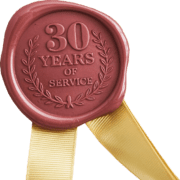Step 10: Get user feedback.
10 Steps to successful CRM implementation
In our final post in this series on the 10 steps to successfully implementing a CRM, we’ll be discussing the crucial element of seeking feedback from users.
One of the most important steps in successfully implementing a CRM is to continuously seek feedback from users. This is essential for identifying areas where the system isn’t meeting the needs of your users or where there may be issues that need to be addressed. Without this feedback, it’s difficult to know where to focus your efforts to improve the system and ensure its ongoing success.
One key area where feedback can be valuable is in the logging of customer interactions. For example, if a sales team is complaining about the difficulty of logging customer interactions, it is important to take this feedback into account and adjust the system. This could involve simplifying the process, providing more training on how to use the interaction log feature, or even considering a different CRM solution that better meets the needs of your sales team.
Another important aspect of seeking feedback is to make sure that you are reaching out to a diverse group of users to get a range of perspectives. This can include employees from different departments, as well as external stakeholders, such as customers and partners. By gathering feedback from a broad range of users, you can gain a more comprehensive understanding of the system’s strengths and weaknesses and make more informed decisions about how to improve it.
One way to gather feedback is by hosting regular user forums or focus groups. This can be an effective way to get a wide range of feedback in a relatively short period. You can also create a feedback form or survey that can be completed by users. This allows you to gather feedback regularly and track progress over time.
It is also important to act on the feedback you receive. This means not only listening to what users have to say but also taking action to address any issues that are raised. This could involve changing the system, providing additional training or support, or even bringing in outside experts to help address specific problems. By acting on feedback, you can show users that their input is valued and that you are committed to making the system as effective as possible.
Seeking feedback isn’t a onetime event, but an ongoing process. CRM systems are constantly evolving, and user needs and expectations are also changing. By continuously seeking feedback, you’ll ensure that your CRM remains relevant and valuable to your organisation.
Seeking feedback from users is an essential part of ensuring the ongoing success of your CRM implementation. It helps to identify areas where the system may not be meeting needs or where there may be issues that need to be addressed. By acting on this feedback, you improve the system and ensure that it remains a valuable tool. Remember to reach out to a diverse group of users, act on the feedback received, and make it an ongoing process.



